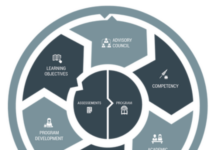
Image: The Saskatoon StarPhoenix
Hill, P. (2015) Bad Data Can Lead To Bad Policy: College students don’t spend $1,200+ on textbooks, e-Literate, November 8
Caulfield, M. (2015) Asking What Students Spend on Textbooks Is the Wrong Question, Hapgood, November 9
Just wanted to draw your attention to two really interesting and useful blog posts about the cost of textbooks.
First thanks to Phil Hill for correcting what I and many other have been saying: that students are spending more than $1,000 a year on textbooks. It turns out that what students are actually spending is around $530 – $640 (all figures in this post are in U.S. dollars and refer to U.S. post-secondary education.) Furthermore, student spending on textbooks has actually declined (slightly) over the last few years (probably as a result of increasing tuition fees – something has to give).
Mike Caulfield however points out that the actual cost of recommended textbooks is over $1,000 a year (or more accurately, between $968 and $1221, depending on the mix of rental and newly purchased books), and that this is the figure that counts, because if students are spending less, then they are putting their studies at risk by not using recommended texts.
For instance, a report by consumer advocacy group U.S. PIRG found that the cost of textbooks has jumped 82% since 2002. As a result, 65% of about 2,000 students say they have opted out of buying (or renting) a required textbook because of the price. According to the survey, 94% of the students who had skipped buying textbooks believed it could hurt their performance in class. Furthermore, 48% of the students said that they had altered which classes they take due to textbook costs, either taking fewer classes or different classes.
More importantly, students and significantly their families do not look at the cost of textbooks in isolation. They also take into account tuition fees and the cost of living, especially if they are studying away from home. So they are likely to consider what they are expected to spend on textbooks rather than what they will actually spend when deciding on post-secondary education. The high cost of textbooks is just another factor that acts as a deterrent for many low income families.
Whether you take the actual expenditure of around $600 a year per student or the required spending of $1,220, having open textbooks available not only results in very real savings for students, but also will have a more important psychological effect in encouraging some students and parents to consider post-secondary education who might not do so otherwise. Getting the methodology of costing textbooks right is important if we are to measure the success of open textbooks, but whichever way you look at it, open textbooks are the right way to go.
Lastly, if you are encouraging your students to become digitally literate, I suggest that you ask them to read the two posts, which, as well as dealing with an issue in which your students will have a major interest, are paragons of well-researched writing, and above all courteous and respectful in their differences.









 Dr. Tony Bates is the author of eleven books in the field of online learning and distance education. He has provided consulting services specializing in training in the planning and management of online learning and distance education, working with over 40 organizations in 25 countries. Tony is a Research Associate with Contact North | Contact Nord, Ontario’s Distance Education & Training Network.
Dr. Tony Bates is the author of eleven books in the field of online learning and distance education. He has provided consulting services specializing in training in the planning and management of online learning and distance education, working with over 40 organizations in 25 countries. Tony is a Research Associate with Contact North | Contact Nord, Ontario’s Distance Education & Training Network.


__Thanks, Tony, for encouraging critical thinking by drawing your followers’ attention to the bad data / misinformation advocates and lobbyists might use to shape public perceptions and policymakers opinions that can lead to bad policy.
You’ll recall, back in March, Phil Hill pointed this issue out in a 3-Part Blog Post which Students will also find interesting – [1] How Much Do College Students Actually Pay For Textbooks? _ http://mfeldstein.com/how-much-do-college-students-actually-pay-for-textbooks/ _ [2] Postscript on Student Textbook Expenditures: More details on data sources _ http://mfeldstein.com/postscript-on-student-textbook-expenditures-more-details-on-data-sources/ _ [3] About the Diverging Textbook Prices and Student Expenditures _ http://mfeldstein.com/about-the-diverging-textbook-prices-and-student-expenditures/ _
In his excellent response, Mike Caulfield’s perspective actually echoed comments from back in March. . . Nicole Allen – “In defense of the College Board figure… First, agreed 100% that it is not a perfect measure and often gets misquoted. HOWEVER, this article asks entirely the wrong question: it’s not about how much students spend, it’s how much textbooks cost that matters.”
Students would also find it insightful to review the report from The U.S. Government Accountability Office (GAO) which includes comments from College Bookstores and Publishers _ College Textbooks: Enhanced Offerings Appear to Drive Recent Price Increases GAO-05-806: Published: Jul 29, 2005 _ http://www.gao.gov/products/GAO-05-806 _
Thanks, Don – very helpful comments